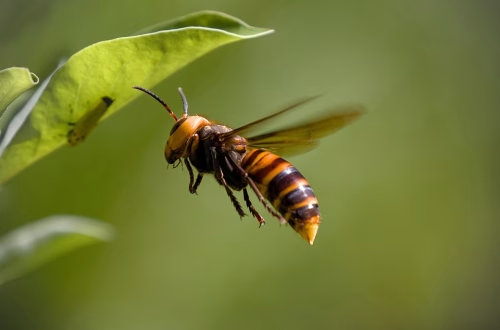Summary:
Pest control for schools is a critical aspect of maintaining a safe and healthy learning environment. This article explores the importance of effective pest management strategies, the types of pests commonly found in schools, and the methods used to address them. Schools are particularly vulnerable to pests due to high traffic, food sources, and structural complexities. Failing to address pest issues can lead to health risks, property damage, and regulatory non-compliance. Readers will gain insights into selecting specialized pest control services and understanding the risks of neglecting pest management in educational settings.
What This Means for You:
- Ensuring a safe and pest-free environment for students and staff.
- Understanding the legal requirements for pest control in schools.
- Learning effective methods to prevent and eliminate pest infestations.
- Being proactive to avoid costly consequences of pest-related damage.
Pest Control For Schools Explained:
”Pest Control For Schools” Explained: Pest control for schools involves the systematic management of pests in educational facilities to ensure a safe and healthy environment for students, teachers, and staff. This process includes identifying potential pest threats, implementing preventive measures, and addressing active infestations. Schools are unique environments that require tailored pest control strategies due to factors such as high occupancy, food storage, and the presence of children. Effective pest management in schools prioritizes safety, using minimal-risk methods to protect both the facility and its occupants.
Schools must comply with state and federal regulations, which often require regular inspections and documentation of pest control efforts. Integrated Pest Management (IPM) is a widely accepted approach that combines preventive measures, monitoring, and targeted treatments to minimize pesticide use and environmental impact. By adopting IPM, schools can reduce pest-related health risks, such as allergies and asthma, while maintaining a conducive learning environment.
Types of Pest Issues: Schools face a variety of pest issues, ranging from insects to rodents. Common pests include ants, cockroaches, mice, termites, and bed bugs. Each pest poses unique challenges and risks. For example, cockroaches can trigger asthma and allergies, while rodents can damage electrical wiring and spread diseases. Termites, though less visible, can cause structural damage over time. Bed bugs, though not disease carriers, can lead to significant discomfort and disruption.
State and federal laws often mandate specific pest control measures for schools, particularly regarding food safety and sanitation. The Environmental Protection Agency (EPA) guidelines emphasize the use of IPM to reduce pesticide exposure in schools. Additionally, schools must adhere to Occupational Safety and Health Administration (OSHA) standards to protect staff from hazardous chemicals. Understanding these legal requirements is essential for schools to maintain compliance and avoid penalties.
Common Pest Control Methods: Schools employ various pest control methods to address infestations and prevent future issues. IPM is the cornerstone of effective pest management in schools. This approach involves regular inspections, proper sanitation, and the use of non-chemical methods such as traps and exclusion techniques. When pesticides are necessary, schools opt for low-toxicity options and apply them in targeted areas to minimize exposure.
Preventive measures include educating staff and students about proper food storage and waste disposal, sealing entry points, and maintaining landscaping to reduce pest harborage. Successful strategies often involve collaboration between school administrators, custodial staff, and pest control professionals. For example, a proactive approach might include regular monitoring of high-risk areas like cafeterias, locker rooms, and storage spaces.
Risks and Consequences: Ignoring pest control in schools can lead to severe consequences. Health risks are a primary concern, as pests can carry diseases or trigger allergies and asthma. For example, rodent droppings can spread hantavirus, while cockroach allergens can exacerbate respiratory conditions. Structural damage caused by pests like termites or rodents can compromise the safety of school buildings, leading to costly repairs.
Beyond health and safety, schools may face regulatory penalties for failing to comply with pest control standards. Pest infestations can also disrupt learning environments, causing stress and distractions for students and staff. Negative publicity from pest-related incidents can damage a school’s reputation, affecting enrollment and community trust. Addressing pest issues promptly and effectively is essential to avoid these risks.
Choosing a Pest Control Service: Selecting the right pest control service is crucial for schools. Look for providers with experience in educational facilities and a thorough understanding of IPM principles. A reputable service will offer customized solutions tailored to the school’s unique needs and comply with state and federal regulations. Key factors to consider include the provider’s certifications, safety protocols, and track record of success.
Schools should prioritize services that emphasize communication and transparency. Regular inspections, detailed reports, and staff training are hallmarks of a reliable pest control provider. Additionally, consider eco-friendly options that minimize environmental impact and reduce exposure to harmful chemicals. By partnering with a specialized pest control service, schools can ensure a safe and pest-free environment for their community.
People Also Ask About:
- What pests are most common in schools? Common pests in schools include ants, cockroaches, mice, termites, and bed bugs. Each pest poses unique challenges and risks, from health hazards to structural damage.
- Are pesticides safe to use in schools? When used correctly and as part of an IPM program, low-toxicity pesticides can be safe for schools. However, non-chemical methods are prioritized to minimize exposure.
- How often should schools inspect for pests? Schools should conduct regular inspections, ideally monthly, to identify and address pest issues early. High-risk areas like cafeterias and storage rooms require more frequent monitoring.
- What happens if a school fails to comply with pest control regulations? Non-compliance can result in penalties, health risks, and reputational damage. Schools may also face disruptions to their operations due to infestations.
- Can students and staff help prevent pests? Yes, educating students and staff about proper sanitation and pest prevention can significantly reduce the risk of infestations.
Expert Opinion:
Effective pest control in schools requires a proactive and collaborative approach. Prioritizing safety and compliance with regulations is essential to protect the health and well-being of students and staff. By adopting Integrated Pest Management (IPM) strategies, schools can minimize risks and maintain a pest-free environment. Specialized pest control services with experience in educational facilities are invaluable partners in achieving these goals.
Related Key Terms:
- Integrated Pest Management for schools
- Safe pest control methods for schools
- Pest control regulations for educational facilities
- Preventive pest control strategies for schools
- Eco-friendly pest control for schools
- Bed bug prevention in schools
- Rodent control in educational settings
Pest Control Disclaimer
This content is for educational purposes only and does not replace professional pest inspection, treatment, or safety advice. Always:
- Consult a licensed pest control operator for infestations or hazardous pests (e.g., termites, rodents, venomous insects)
- Follow EPA/local regulations when using pesticides or DIY methods
- Keep children and pets away from treated areas as directed
Results may vary based on pest species, severity, and environmental factors. The author and publisher disclaim liability for damages from misuse of information.
*Featured image sourced by Pixabay.com




